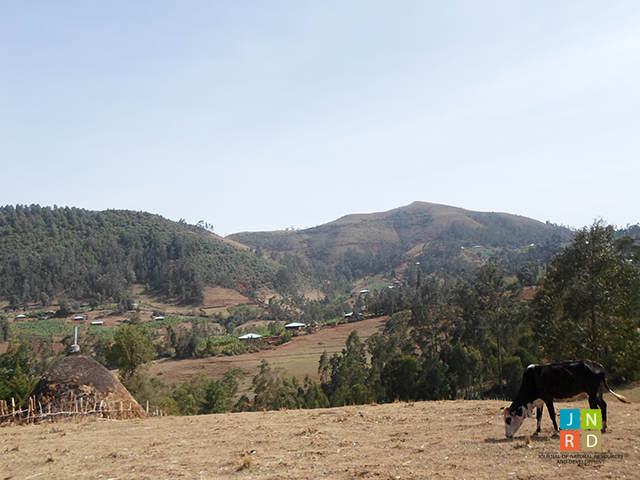Carbon Storage of Wooden Houses, Trees, and Grazing Land in Rural Areas of Enemorina Ener District, Southern Ethiopia
Main Article Content
Abstract
In Ethiopia, wood was the main construction material for rural houses. In 2013, about 79% of the rural houses of Ethiopia were fully made of wood. Although carbon storage of wood is well known for climate change mitigation, there is lack of information on carbon stock of wooden houses in Ethiopia. Thus, a study was conducted to analyze the carbon stock of dominant land uses that surround rural wooden houses in three agro-ecologies and representative three peasant associations (PA) or Kebeles in Southern Ethiopia. Field measurement and household survey were made by selecting sixty-four houses made of wood, grass or corrugated iron sheet. Transects were laid starting from the wooden houses to lay out plots to collect samples of wood, grass, soot inside houses, soil and trees for carbon determination. The service age of wooden houses was estimated in triangulated interview as 5-150 years. The total carbon stock of newly constructed rural grass covered wooden house was 28.35- 49.26 kg C m-2, which was greater than the other surrounding land uses. The grazing land total carbon stock was 50.5-86.8% and the scattered trees carbon was 9.5-59.7% of the total carbon stock of the respective PA grass covered wooden house. Since soil is the common below ground carbon stock, the total carbon of a land use is mostly affected by the above ground carbon stock. Grass covered houses contained greater above ground carbon stock but grazinglands contained greater below ground carbon stock. Soot accumulation of 0.4-1.3 g m-2 inside the houses’ roof indicated the presence of indoor pollution. The total carbon stock increased with increasing altitude and geoclimatic variables were significantly correlated with carbon stock of the land uses (p<0.05; r = ±0.999). Therefore, wooden houses need to be considered in climate change mitigations. The shift of carbon stock from natural environment to wooden houses in human dominated landscapes was indicator of a lack of forests, and then efforts should be strengthened to increase forest cover.
Article Details
Issue
Section

This work is licensed under a Creative Commons Attribution-NonCommercial-NoDerivatives 4.0 International License.

